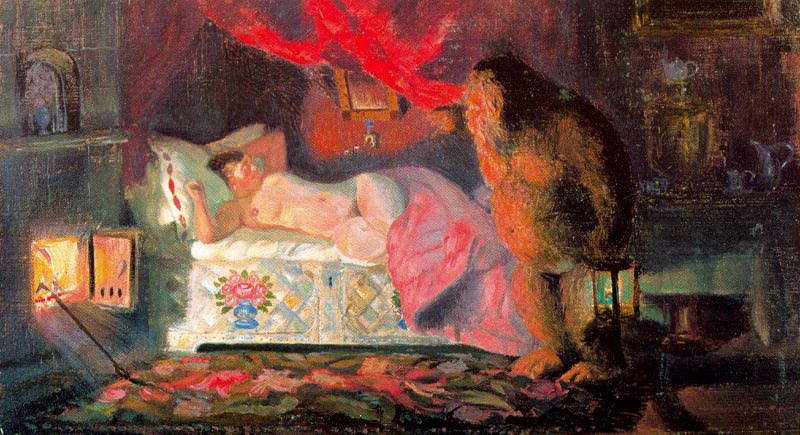#43775 Boris Kustodiev (1878-1927)
Boris Kustodiev – #43775
Edit attribution
Download full size: 800×435 px (0,1 Mb)
Painter: Boris Kustodiev
The painting was painted in 1922. Kustodiev loved to depict provincial Russia in his paintings. He was especially attracted to those villages that were on the upper Volga. This is where the images of a merchant and bourgeois way of life, which became the themes of his works, were born. The original motif of the fair and Shrovetide constantly varied the artist. The effect was always the most variegated, colorful and necessarily major.
Description of Boris Kustodiev’s painting The Merchant’s Wife and the Housekeeper
The painting was painted in 1922.
Kustodiev loved to depict provincial Russia in his paintings. He was especially attracted to those villages that were on the upper Volga. This is where the images of a merchant and bourgeois way of life, which became the themes of his works, were born. The original motif of the fair and Shrovetide constantly varied the artist. The effect was always the most variegated, colorful and necessarily major. This is a special affinity of the painter’s work with folk art.
Gradually, the beginning of ironically theatrical grows in the composition of paintings. Increasingly stronger becomes a sense of the idyll, irreality, filled with nostalgia and sadness.
We see a merchant’s wife and a house man standing in front of her. The furnace crucible is open. The fire at night creates a special impression. It makes a characteristic crackling sound and casts bizarre shadows. Such sounds can not only appease, unaccountable anxiety may arise. A rug lies in front of the open door of the stove. Such a situation is extremely dangerous, as sparks can accidentally fall on it.
Kustodiev’s Merchantess is absolutely defenseless. She sleeps in a completely open position. Her bed is a trunk with a blanket of down and featherbeds. The featherbeds are allegorically connected with the clouds of paradise. According to official religion, the housekeeper belongs specifically to the dark world. But in the past, it was considered a real master of the house, who protected it from all evil. The presence of a house ghost was considered the norm.
The housekeeper is depicted by darkness and glow. The lantern next to him shines backwards. The question arises, what did this character come for? Most likely, he foreshadows something bad. The glow of the fire blazing in the furnace is the real quintessence of anxiety, of danger on a global scale. The intensity of the color suggests its great power.
There is a special aggression and incredible pressure in the combination of shades. Red as a bright lightning penetrates the entire space. A small gust of wind is enough for the fire to spread throughout the room.
The painting evokes an ever-increasing sense of unease in the viewer.
Кому понравилось
Пожалуйста, подождите
На эту операцию может потребоваться несколько секунд.
Информация появится в новом окне,
если открытие новых окон не запрещено в настройках вашего браузера.
You need to login
Для работы с коллекциями – пожалуйста, войдите в аккаунт (open in new window).




















You cannot comment Why?
Perhaps it’s a painting of a woman laying in a bed next to a cat and a cat sitting on top.